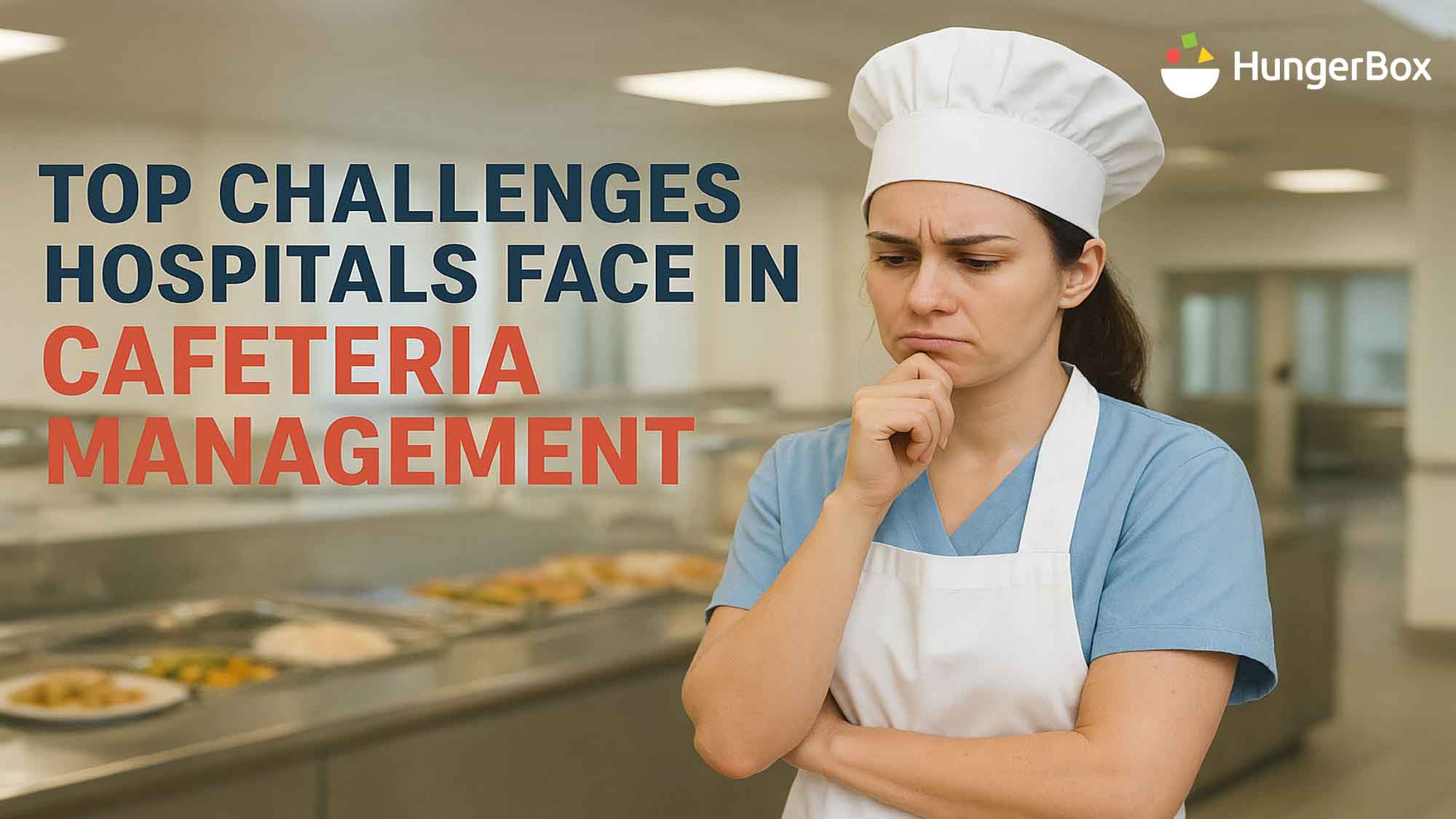
Top Challenges Hospitals Face in Cafeteria Management
Hospitals are known to cater to a unique audience - patients with dietary restrictions, doctors and nurses with irregular schedules, and visitors looking for quick, healthy meals. With so many moving parts, hospital cafeteria management often becomes one of the toughest operational challenges in healthcare.
However, with the right processes and technology, hospitals can transform cafeterias from chaotic food counters to efficient, patient- and staff-centric dining hubs.
Let’s look at the top challenges with hospital cafeteria management, and the smart ways to solve them.
Managing Dietary Restrictions and Nutritional Needs
The Challenge:
Hospitals must serve meals that cater to diverse needs - from diabetic patients to vegan or allergen-free meals. Manual planning often leads to errors, menu confusion, or unsafe cross-contamination risks.
The Solution:
Smart cafeteria management software allows hospitals to digitize menus with nutritional information, allergen tagging, and calorie counts. Patients, staff, and visitors can filter meals by dietary requirements, ensuring safe and personalized dining. For patients, this also helps doctors prescribe specific meal plans that the cafeteria can execute seamlessly.
Unpredictable Food Demand
The Challenge:
Unlike corporate cafeterias, food demand at hospitals is irregular. Emergency admissions, visiting hours, and round-the-clock staff shifts make it nearly impossible to forecast accurately. This often leads to either food shortages or wastage.
The Solution:
By integrating cafeteria software with hospital attendance systems and shift rosters, managers can forecast meal demand in real time. Predictive analytics helps plan procurement better, reducing overproduction while ensuring no staff member or visitor goes hungry.
Long Queues and Inefficient Service
The Challenge:
Doctors and nurses often get limited breaks, and long cafeteria queues cut into their valuable rest and recovery time. For visitors, slow service creates frustration.
The Solution:
Digital pre-ordering and slot-based dining distribute cafeteria traffic evenly. Staff can order meals through an app and pick them up without waiting in line. while visitors can pre-book food during visiting hours. This reduces congestion and ensures faster service for time-sensitive workers.
Vendor Coordination and Quality Control
The Challenge:
Most hospitals work with multiple food vendors for variety and cost efficiency. But without technology, tracking quality, hygiene standards, and timely delivery across vendors becomes complex.
The Solution:
With centralized vendor dashboards, hospitals can monitor delivery timelines, hygiene audits, and service quality scores. Digital vendor logs ensure accountability, while automated invoicing and contract management reduce administrative workload.
Compliance with Health and Safety Standards
The Challenge:
Hospitals must maintain the highest hygiene standards. Manual logging of sanitization checks, food storage temperatures, or allergen protocols often lead to gaps, risking compliance failures during inspections.
The Solution:
Hospital cafeteria management platforms come with digital hygiene checklists, automated temperature tracking, and audit-ready reports. These ensure that every aspect of food safety is documented and easily accessible for internal and external audits.
Food Waste and Sustainability
The Challenge:
Overproduction, expired stock, and plate waste are common issues in hospital cafeterias. Apart from increasing costs, food waste also impacts sustainability targets.
The Solution:
Real-time inventory management tools track stock levels automatically after each transaction. Combined with demand forecasting, hospitals can minimize wastage and align procurement with actual usage. Cafeteria dashboards also highlight which meals generate the most leftovers, enabling continuous menu optimization.
Cost Transparency and Budget Control
The Challenge:
Hospital cafeterias run on tight budgets, often subsidized for staff. Without accurate data, cost leaks occur through overstaffing, vendor overbilling, or excessive wastage.
The Solution:
Cafeteria software provides real-time cost-per-meal analytics, helping administrators see exactly how much each meal costs per patient, visitor, or staff member. This transparency supports better budgeting, subsidy tracking, and long-term cost savings.
Staff Shortages in Kitchens
The Challenge:
Just like clinical staff, hospital kitchens face high attrition and irregular staffing. Traditional scheduling struggles to keep up with unpredictable demand.
The Solution:
AI-powered cafeteria tools use demand forecasting to optimize staff deployment. By aligning kitchen schedules with real-time footfall, hospitals can avoid overstaffing while ensuring peak-hour service runs smoothly. Automation of billing, inventory, and reporting further reduces dependence on large teams.
Enhancing Employee Wellness Through Food
The Challenge:
Hospital staff work in high-stress environments with long hours. Limited, unhealthy food options can affect morale and productivity.
The Solution:
By integrating cafeteria platforms with HR wellness programs, hospitals can offer nutritional meal options, calorie tracking, and healthy-eating incentives. This not only supports employee wellness but also improves retention and overall satisfaction.
Delivering a Consistent Dining Experience Across Locations
The Challenge:
Large hospital networks often manage multiple cafeterias across campuses or satellite facilities. Ensuring consistency in food quality, hygiene, and service across all sites is difficult without a centralized system.
The Solution:
Cloud-based cafeteria management solutions enable standardized menus, vendor contracts, and hygiene protocols across multiple locations. Centralized reporting ensures that whether it’s the main campus or a smaller branch, the dining experience remains uniform and reliable.
The Smart Way Forward for Hospitals
Hospital cafeterias are more than just dining spaces. They are critical touchpoints for patient satisfaction, employee morale, and operational efficiency. By addressing key challenges with smart digital solutions, hospitals can reduce waste, improve compliance, and create a dining experience that matches the quality of care provided.
Platforms like HungerBox are leading this transformation with cafeteria solutions designed for healthcare environments. From real-time inventory management to app-based ordering, these tools empower hospitals to run efficient, safe, and employee-friendly food operations.
Want to see the impact for yourself? Schedule a demo and explore how digital cafeteria management can work for your hospital.
Experience the ease of pre-ordering and queue-free service—download the app today.
Hospital cafeteria management doesn’t have to be chaotic—with the right technology, it can become your hospital’s strategic advantage. If you’d like to learn more about how HungerBox can help your hospital cafeteria run smoothly, contact us today.